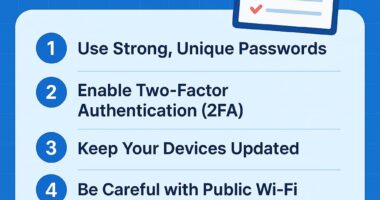Introduction: Turning Views into Value
In today’s digital economy, content creation is no longer just a passion — it’s a profession. From YouTubers earning through video ads to brands leveraging Facebook campaigns, platform monetization has transformed how creators and businesses grow online.
Two of the most powerful monetization ecosystems leading this transformation are Facebook Ads and YouTube AdSense. Understanding how these platforms operate — and how to use them strategically — is key to unlocking consistent revenue streams in 2025.
This guide takes a deep dive into both systems, exploring how each works, how to optimize performance, and what’s next in the evolution of digital monetization.
Understanding Platform Monetization in 2025
What Is Platform Monetization?
Platform monetization refers to the process of earning money through digital platforms that host content, advertising, or audiences. It includes:
-
Ad revenue (from viewers and impressions)
-
Affiliate or partner programs
-
Sponsored content and brand collaborations
-
Memberships and in-app purchases
In this landscape, Facebook Ads and YouTube AdSense stand as two pillars of digital income. While one empowers advertisers to reach targeted users, the other rewards creators for their content engagement. Let’s break down how both work — and how you can make them work together.
Facebook Ads: The Power of Precision Marketing
How Facebook Ads Monetization Works
Facebook Ads operates as a robust advertising platform that allows businesses and creators to reach specific audiences using highly detailed targeting tools. The monetization happens through ad placement, campaign optimization, and conversion tracking.
Advertisers pay Facebook for ad impressions, clicks, or actions — while creators can earn revenue through in-stream ads and branded content partnerships.
Key Facebook Monetization Tools:
-
In-Stream Ads: Short video ads placed before, during, or after eligible Facebook videos.
-
Meta Brand Collabs Manager: A platform that connects creators with brands for paid collaborations.
-
Subscription Features: Allow fans to pay for exclusive content.
-
Performance Campaigns: For businesses, every click, lead, or sale represents measurable ROI.
The Algorithm Behind Facebook Ads
Facebook’s monetization magic lies in its AI-driven ad delivery system. The platform analyzes user data — from demographics and behavior to engagement — and serves ads that are most likely to perform.
The Core Mechanisms Include:
-
Auction System: Ads compete based on bid value, estimated action rate, and user relevance.
-
Conversion Optimization: Facebook’s machine learning learns which users are most likely to take desired actions.
-
A/B Testing (Split Testing): Allows advertisers to refine creatives and target groups.
Understanding this algorithm helps creators and brands design campaigns that cost less and perform better.
Tips for Maximizing Facebook Ad Revenue
1. Refine Audience Targeting
Use Facebook’s Custom Audiences and Lookalike Audiences to focus on high-conversion users. Target interests, behaviors, and locations aligned with your goals.
2. Focus on Video Content
Videos have higher engagement rates. Incorporate storytelling and hooks in the first 3 seconds to boost retention and qualify for in-stream ads.
3. Optimize for Mobile
Over 95% of Facebook users access the platform via mobile. Use vertical video formats and concise captions for better ad performance.
4. Use Data Analytics
Monitor metrics such as CPM (Cost per 1,000 impressions), CTR (Click-Through Rate), and ROAS (Return on Ad Spend) to refine campaigns over time.
YouTube AdSense: Monetizing Attention with Creativity
How YouTube AdSense Works
YouTube AdSense is the program that allows creators to earn money from ads displayed on their videos. Once a channel joins the YouTube Partner Program (YPP), Google places relevant ads before, during, or after videos — and shares a portion of the revenue with the creator.
Creators can monetize through:
-
Display Ads
-
Overlay Ads
-
Skippable and Non-Skippable Video Ads
-
Channel Memberships
-
Super Chats and Super Stickers
The Algorithm Behind YouTube AdSense
YouTube’s monetization depends heavily on engagement metrics and content suitability. The platform’s algorithm uses AI to determine which videos should show ads and how much advertisers are willing to pay.
Key Factors Influencing Earnings:
-
Watch Time & Retention: The longer viewers stay, the higher the ad potential.
-
Audience Demographics: Ads targeting premium audiences (like finance or tech) often yield higher CPMs.
-
Content Type: Family-friendly, educational, and niche-specific videos tend to attract better advertisers.
-
Engagement Rate: Likes, comments, and shares indicate viewer trust — crucial for algorithmic promotion.
Tips for Boosting YouTube AdSense Income
1. Create Consistent, Niche Content
YouTube rewards consistency. Focus on a niche that builds loyal audiences — whether that’s gaming, tech, beauty, or education.
2. Increase Watch Time
Use storytelling, strong intros, and cliffhangers to keep viewers watching longer. Longer videos can host multiple mid-roll ads.
3. Optimize Thumbnails & Titles
Attractive visuals and SEO-driven titles improve CTR, which directly impacts monetization potential.
4. Understand RPM and CPM
-
CPM: The amount advertisers pay per 1,000 views.
-
RPM: The actual revenue you earn per 1,000 views (after YouTube’s cut).
Track both to identify profitable video types.
Facebook Ads vs. YouTube AdSense: Which Pays More?
| Criteria | Facebook Ads | YouTube AdSense |
|---|---|---|
| Revenue Source | Ad campaigns, brand deals, subscriptions | Video ads, memberships, Super Chat |
| Monetization Model | Advertiser-driven | Creator-driven |
| Average CPM (2025) | $6–$12 (varies by region) | $1–$20 depending on niche |
| Audience Targeting | Highly customizable | Algorithm-based targeting |
| Best For | Businesses and creators with large audiences | Video creators with consistent engagement |
The truth is — both can be incredibly profitable if used strategically.
Facebook excels at audience targeting and conversions, while YouTube shines in passive income and long-term growth.
Integrating Facebook and YouTube Monetization Strategies
To maximize revenue, creators and businesses should combine both ecosystems.
Here’s how:
1. Cross-Promotion
Use Facebook to drive traffic to your YouTube videos — and vice versa. Each platform’s audience engagement can boost overall visibility.
2. Retargeting
Install the Meta Pixel on your website or YouTube link pages to retarget viewers with Facebook Ads who’ve previously engaged with your videos.
3. Data Synergy
Use YouTube Analytics and Facebook Insights to understand audience overlap. This data synergy helps you craft unified campaigns that resonate across platforms.
Future Trends: The Evolution of Platform Monetization
As we move deeper into 2025, both Facebook and YouTube are integrating AI-powered ad placement, short-form content monetization, and creator incentive programs.
-
Facebook is expanding monetization through Reels Ads and AI-driven audience matching.
-
YouTube is pushing Shorts Monetization, allowing short creators to earn ad revenue.
-
AI tools will play a central role in optimizing content for engagement and ad suitability.
The future of monetization isn’t about choosing one platform — it’s about mastering both.
Conclusion: Monetization as a Digital Mindset
Mastering platform monetization is more than understanding algorithms — it’s about building trust, consistency, and strategy.
Facebook Ads and YouTube AdSense offer powerful opportunities to grow income, but real success lies in combining creativity with analytics.
As the creator economy continues to evolve, those who understand both data-driven marketing and content authenticity will lead the next wave of digital entrepreneurship.









